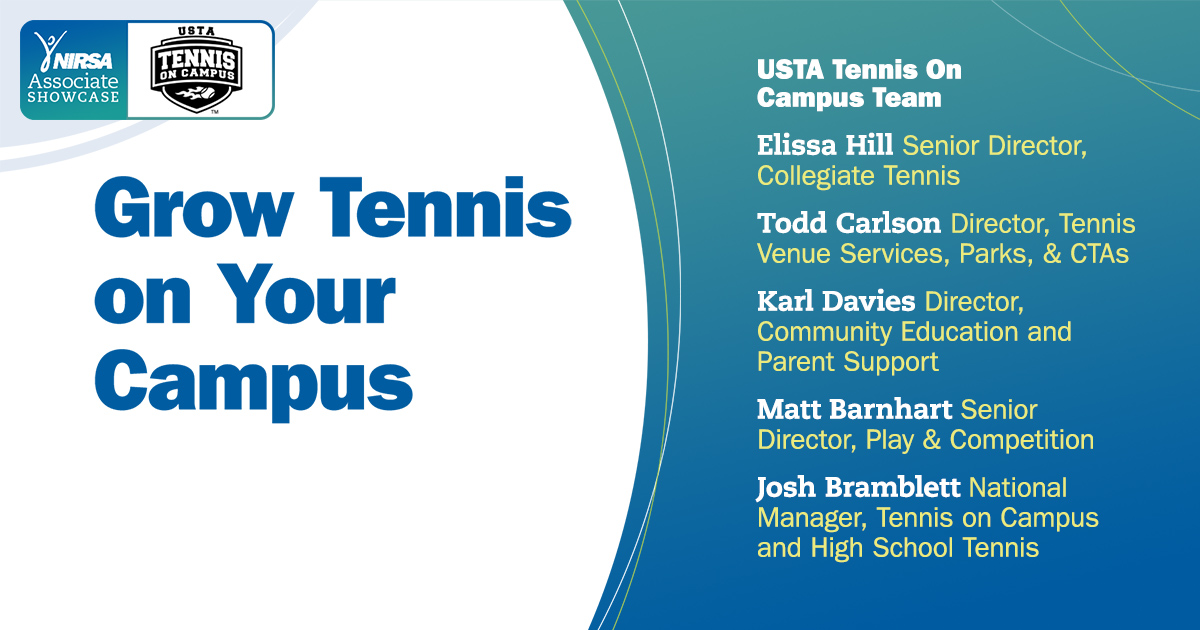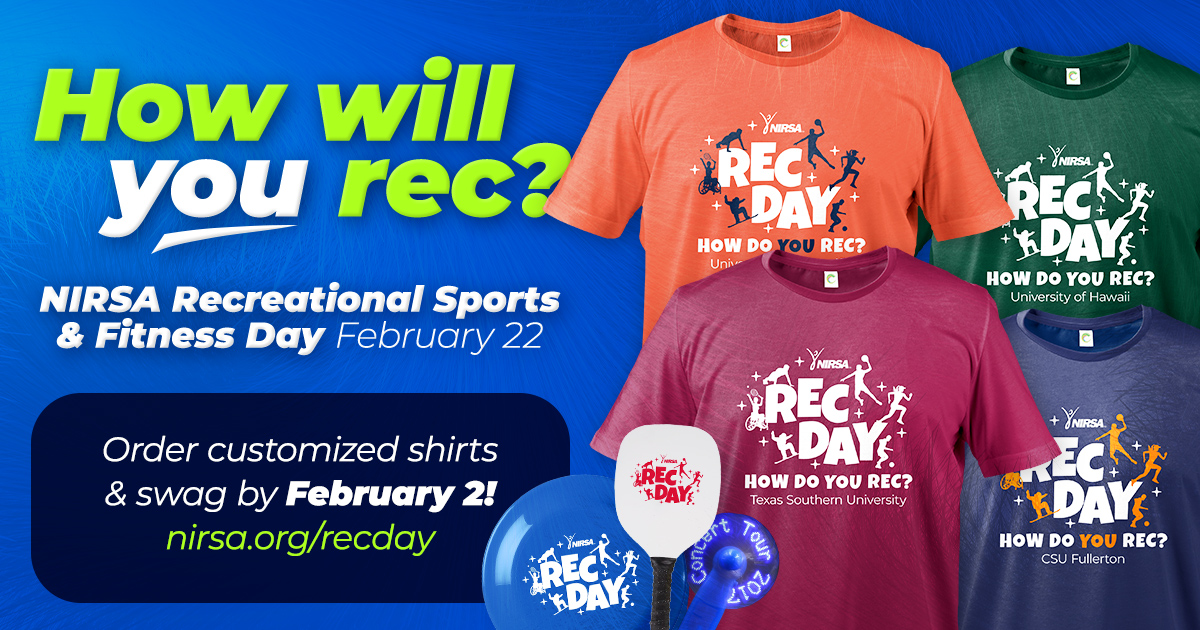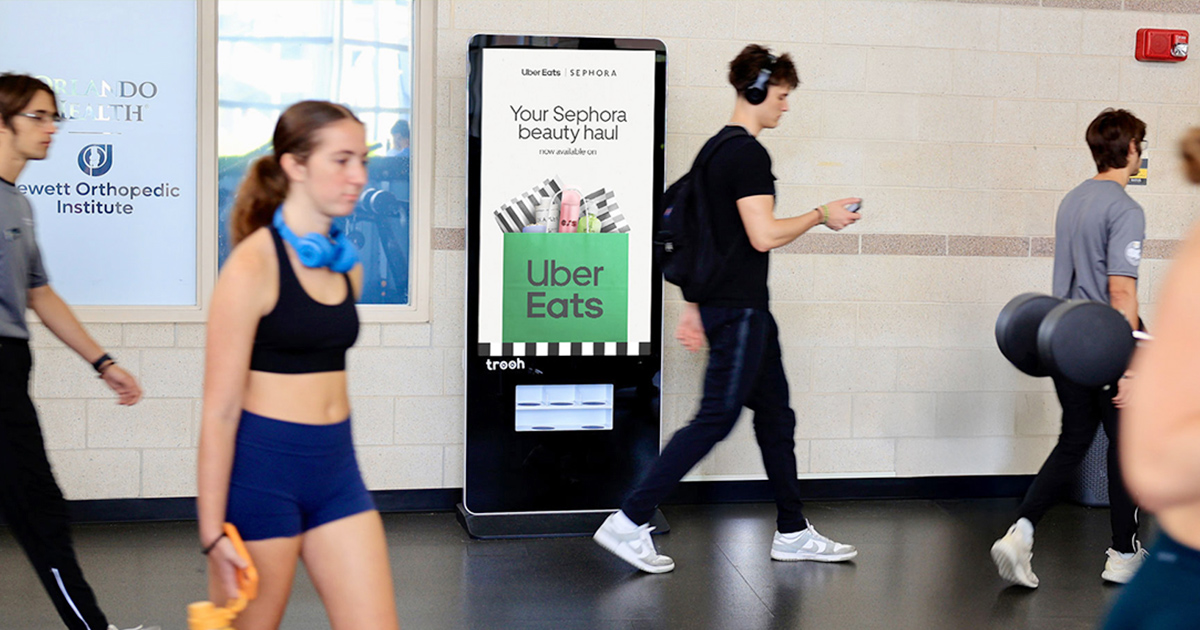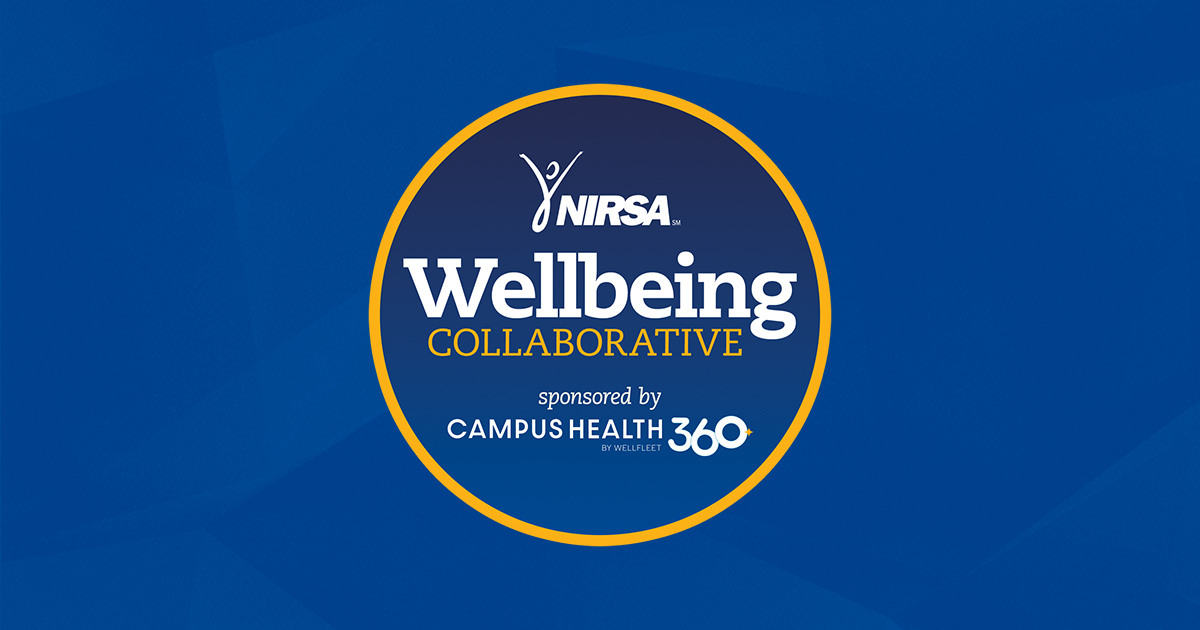A recent webinar by NIRSA Diamond Partner United States Tennis Association (USTA) showcased extensive resources to support intramural and club tennis. During “Grow Tennis on Your Campus,” speakers from USTA highlighted opportunities to finance facility construction, organize competitive and recreational play, and assist club teams through grants.
The webinar is a can’t miss for campus rec departments looking to expand their tennis programs, add opportunities for accessible play, and fund their tennis facilities. Grants are only open through December 31, 2024, but you can view a free recording of the webinar anytime.
Create top-notch facilities with grants
Todd Carlson, USTA Director of Tennis Venue Services, Parks, & CTAs, emphasized the crucial role of USTA in enhancing campus tennis infrastructure. He showed examples of dilapidated tennis courts transformed into beautiful, usable facilities and detailed various grants, advocacy, business services, and technology available to universities.
Community partnerships and innovative software to manage court reservation and smart access controls can streamline operations and generate revenue during peak times. With many court resurfacing projects averaging $10,000 per court, USTA grants make a significant impact on campus facility budgets:
- Up to $5,000 for basic improvements, including fixed-court amenities like backboards, shade screens, and wind structures
- Up to $35,000 for court resurfacing
- Up to $55,000 for new or reconstruction of courts and light installation
USTA has collaborated with many campuses over the years, including the University of Memphis, Columbia University, Pepperdine University, and the University of Colorado. Two examples, in particular, illustrate the transformative potential of USTA’s resources to develop outstanding facilities:
- Texas A&M International University: A public-private partnership with the campus, city council, and local tennis association resulted in 18 new tennis courts, benefiting both students and the local community. A city bond proposal provided more than $6 million for the project, and the local organization also raised private funds. The grand opening is anticipated by year-end.
- The University of Alabama: The school made significant investments into its recreational courts, including providing a club house for its wheelchair tennis adaptive program.
Expand tennis play with club funding and pilot program packages
Josh Bramblett, USTA National Manager of Tennis on Campus and High School Tennis, highlighted new ways to integrate tennis into campus life, engaging students, faculty, staff, and the surrounding community.
The long-standing Tennis On Campus (TOC) program offers competitive and recreational opportunities for leagues and tournaments. Grants are also available for new and existing TOC programs that integrate into USTA’s team platform.
Josh also introduced Adult Red Ball Tennis, which uses large, low-compression balls to make tennis more accessible and fun—especially for beginners and younger players. USTA is seeking campuses to pilot the program, with all-inclusive equipment packages, marketing toolkits, pullovers, and stipends available for the first 50 participating schools.
Simplify tennis delivery with coaching resources
How can campuses start new programs, organize play, and engage students? Dr. Karl Davies, USTA Director of Community Education and Parent Support, reviewed resources for making tennis delivery more straightforward through USTA’s coaching development resources.
Paid facilitator workshops, supported by research from George Washington University, emphasize holistic athlete development and fun, athlete-centered coaching. The “Paid Facilitator Pathway” takes a phased approach to support coaching skills development and retention through online modules, in-person education, and certification. The goal of the pathway, Karl explained, is to provide ongoing support and deliverables so coaches and facilitators can continue offering great experiences that get students playing for a lifetime.
Josh noted that the Paid Facilitator Pathway is key for campuses that may be understaffed: It allows club tennis players a pathway into coaching that benefits campus teams, summer camps, and activations.
- For more information about NIRSA’s Associate Showcase and editorial opportunities like sponsored webinars, sponsored articles, and advertising, please contact NIRSA Assistant Director of Expo & Corporate Relations Kelley Hungerford.
Kelley Hungerford is currently the Assistant Director of Expo & Corporate Relations at NIRSA.








